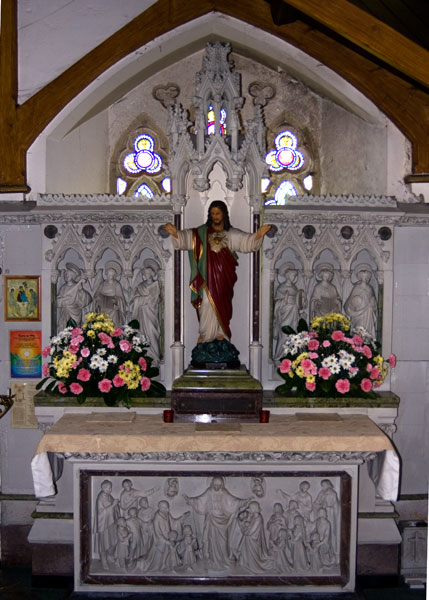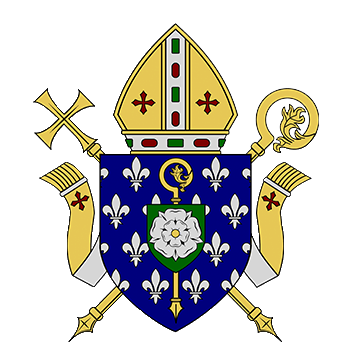History of the Church of the Sacred Heart, Howden.
Thank you to Paul Waddington, who researched and wrote the following history.
In his book “Historical Notes on English Catholic Missions”, the author, Mr Kelly, observes that there were 150 Catholics in Howden and writes: “being denied the use of the Town Hall for Mass on Sundays, Fr Cook preached to the people from the town’s cross with such success that he was able to erect a temporary chapel”. Mr Kelly does not give any date for this incident, but it must surely predate the first baptism recorded in the parish records, which was conducted by Fr Camburini on 8th July 1849. There are a further 25 baptisms in the record book before the Church of the Sacred Heart was opened on 3rd July 1851.
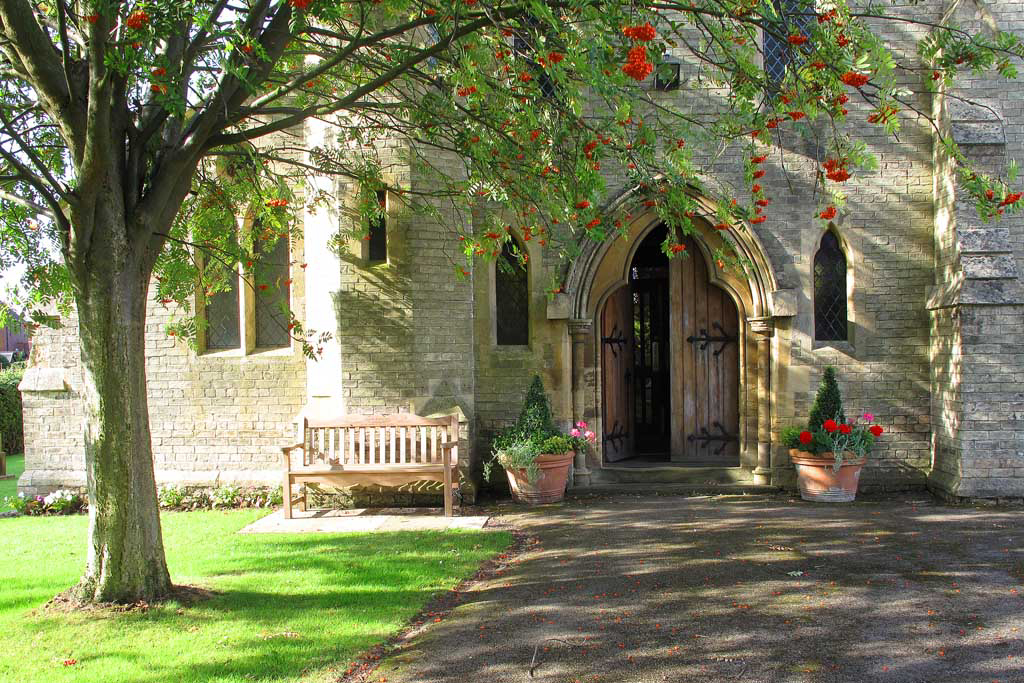
Fr Camburini was an Oblate of Mary Immaculate (OMI), an Italian order of missionary priests who were particularly active at that time in England. It seems likely that Fr Cooke (this is the correct spelling of his name) was also an Oblate of Mary Immaculate, and that this order had been invited by one of the local Catholic families to set up a mission in Howden. They made speedy progress in their task, opening a temporary church in 1849 and the present church in 1851. In 1853, the parish was handed over to the Diocese of Beverley, the first Parish Priest being Fr Thomas Danson who remained in Howden for 28 years. It is probable that the presbytery dates from this time and that the numerous OMI priests that served the community during the previous two years were resident elsewhere.
There are two plaques in the church which suggest that Frederic Harold Sunderland of Howden and William Thompson of Hazlewood Castle were major benefactors. Little is known of either of these, although Hazlewood Castle, near Tadcaster, was the home of the Vavasour family and there were branches of that family living not far from Howden. It was common at this time for the wealthier Catholic families of the district to pay for new churches in small towns and country areas.
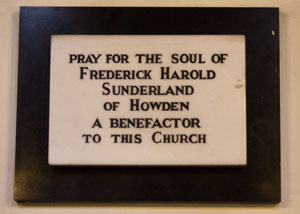
No information has survived about the temporary church. We don’t even know its location, but, in view of its short life,
we must presume that it was a very modest building. The replacement church, on the other hand, has considerable distinction.
Designed to seat 200, it was an ambitious project for the fledgling Catholic community of Howden. The architect, Joseph Aluysius Hansom,
who was little known at the time, went on to build numerous Catholic churches, including some very large and prominent ones
St Walburge’s in Preston, the Holy Name in Manchester and Our Lady and St Philip Howard in Arundel (now the cathedral of the
Diocese of Arundel and Brighton). He is also remembered as the designer of the Hansom Cab and the founder of an influential
architectural periodical known as The Builder.
Occupying a prominent site, at the junction of Knedlington Road and Buttfield Road, the Sacred Heart Church is built of yellow brick with limestone dressings.
It is neo-gothic in the Old English style and has a small bell turret, although with no bell. Consisting of a nave, side aisles and full height apsidel
chancel, the church is simple and unfussy. It is well lit by trefoil windows above the six arch arcading, and plentiful windows in the lower walls of the
side aisles, a few of which now are fitted with stained glass. There is a choir loft with narthex beneath. The carved wooden high altar has survived
reordering, although detached from its reredos which has been lost. The church is now Grade II listed.
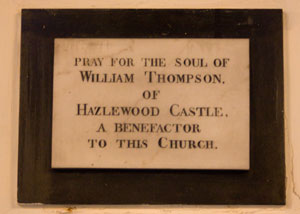
An interesting feature is a side altar with initricately carved reredos. This started life in the original chapel at Everingham Hall and is considerably older than the Sacred Heart Church. It is thought that the numerous figures carved in the front face of the altar are members of the Maxwell-Constable family.
The presbytery is also of architectural merit, having an interesting steeply pitched roof line. The original two story building, presumably also designed by J A Hansom, soon proved to be too small and was sympathetically doubled in size. Unfortunately, later extensions, both at front and rear, have been poorly executed, and detract from what would otherwise be a fine building.
For many years, there was a school attached to the parish. It opened in 1893 and was located to the south of the presbytery. Although built to accommodate 66 children, the number of pupils rarely exceeded 40, and the viability of such a small school was often questioned by the Education Authority. Numbers took a dive after the opening of a new Catholic primary school in Goole; and the minutes of a meeting of governors in March 1980 record that the roll had reduced to five infants and twelve juniors. The school finally closed in 1981 when the remaining nine pupils transferred to St Joseph’s School in Goole. The building was sold and converted to a private dwelling which has survived to the present time.
When, in 1878, the Diocese of Beverley was divided into the Dioceses of Leeds and of Middlesbrough, Howden, being in the East Riding, became part of the Middlesbrough Diocese. This was a very controversial decision at the time, as local people felt very little affinity with Middlesbrough which is 80 miles distant. It is ironic that, when in 2004, the decision was made to transfer the parish of Howden to the Leeds Diocese, there was similar resistance on the grounds that the people of Howden felt little affinity with Leeds, only 30 miles distant. The reason for the transfer became evident in 2008, when the Sacred Heart Parish was merged with that of St Joseph in Goole. Fr Neville Atkinson became the parish priest of the combined parish and took up residence at the Sacred Heart presbytery.
